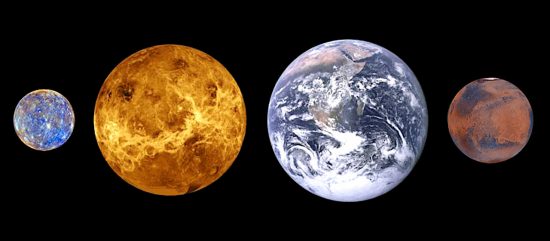
April 3, 2020
Venus leaves astrophysicists with many unanswered questions.
1. What force drives the atmospheric movement?
2. How does the atmosphere circulate?
3. What are the clouds in the lower atmosphere made of?
4. Was there ever any water in the atmosphere?
5. Does internal radiation influence the planet?
6. Is there volcanic or tectonic activity?
An important tenet of Electric Universe theory is that the Sun and Solar System are in a state of dynamic equilibrium. At some time in the past, a time that is quite recent in conventional terms, Venus, Earth, and Mars experienced an increase in their electric fields, as well as their magnetospheres. They either extended plasma tails of such length and strength that they engulfed other planets and moons, or they entered unstable orbits that brought them into dangerous proximity to each other. Perhaps both situations existed. The result is that the electric field on Venus is anomalous, with energy greater than can be accounted for by ordinary theories.
Signs of that catastrophe are everywhere on Venus: cracks and trenches extend for hundreds of kilometers, giant “coronae” are accompanied by massive fracture zones, branching out like carved lightning bolts. Vast caldera, with glassified rims and crazed interiors, cover tens of thousand square kilometers.
In past Picture of the Day articles, it was pointed out that those features, among others, are common to electric discharge events: craters with wide, flat floors and steep sidewalls that are often terraced; sinuous channels, or canyons, with vertical side walls, scalloped edges, no outflow debris, and flat bottoms; mesas with forty-five degree “shoulders” and escarpments that are often etched with parallel, vertical grooves; dual-ridge faults with no sign of strike-slip and sometimes with other faults cutting across them at ninety degrees. All of those structures are seen on Venus.
On December 14, 1962 Mariner 2 flew by the planet, becoming the first one of the largest number of targeted missions to any celestial body, other than the Moon. On November 9, 2005, the European Space Agency (ESA) launched Venus Express, a twin spacecraft to the Mars Express satellite, on an extended mission to map the second planet using radar. Since Venus is covered with a visually opaque blanket of carbon dioxide and sulfur dioxide clouds, radar technology is the only way to “see” beneath them.
As mentioned, Venus is dry. Its electric field is so strong that it pulls charged water vapor hard enough to eject it from the planet’s gravity field. In the upper cloud tops, ultraviolet light breaks water into its constituent elements, hydrogen and oxygen ions, which are accelerated away by the electric field. However, that field is stronger than anyone expected—five times more powerful than Earth’s field. Perhaps the strength of the field provides an explanation for the bright mountaintops on Venus.
One of the ideas formulated by Electric Universe advocate, Wal Thornhill is that the mountain tops on Venus are electrically energized:
“…diffuse electric discharge, known on Earth as ‘St. Elmo’s fire’, occurs preferentially at the higher altitudes of the mountains on Venus. In that thick atmosphere it forms a highly conductive dense plasma, which is a superb reflector of radar signals. The density of the atmosphere at the surface of Venus is about 1/10 that of water. St. Elmo’s fire is a highly ionised state involving actual discharge. Put the two together and you have dense plasma – which conducts like a metal and therefore reflects radar like a metal surface.”
The last NASA mission to Venus was Magellan, which launched in 1989. The European Space Agency’s Venus Express provided data until 2014. Right now, the only spacecraft at Venus is JAXA’s Akatsuki mission, which arrived in December 2015. The next U.S. sponsored mission is likely to be a balloon.
Stephen Smith
The Thunderbolts Picture of the Day is generously supported by the Mainwaring Archive Foundation.












